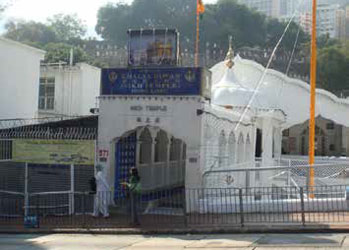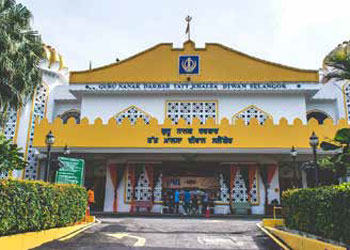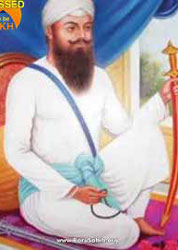Gurdwaras in South East Asia
As the population of Sikhs in various South East Asian countries like Malaysia, Singapore, Thailand, Burma and Indonesia is quite notable, there are a number of Gurdwaras situated in these countries. In Malaysia, the population of Sikhs is the highest in East Asian Countries. According to Sikhi Wiki there are around 100000 Sikhs in Malaysia. Many Sikhs were brought over to Malaya (earlier name of Malaysia) from India during the British colonial period to serve as police, soldiers or guards. That is why the first Gurdwara was setup mainly by the Police Personnel in 1890 at Jalan Parliament, Kuala Lumpur. Since then, this Gurdwara, commonly known as Gurdwara Sahib Police Jalan is functioning in the same building. When the diamond jubilee of Queen Victoria was celebrated in 1897, a new Gurdwara was established by the Sikhs in Penang and this Gurdwara was named at that time as Diamond Jubilee Gurdwara. In 1997, its centenary was celebrated. This Gurdwara situated at 87, Jalan, 10300 Penang can be contacted on phone no. 604-2272250. With the turn of 20th Century, the Sikh Population started increasing in all parts of Malaysia. They also started occupying top positions like MLA (Jagdeep Singh Deo), MP (Gobind Singh Deo), High Court Judge (Harminder Singh Dhariwal) and High Army and Police officers. S. Gobind Singh Deo has recently become the first turban Sikh Minister of Malaysia. S. Amar Singh is presently the Chief Police Officer of Kuala Lumpur and S. Ajit Singh has been the Ambassador of Malaysia in various countries. This country has also given many Sikh sports persons in different sports, particularly Hockey. S. Surjeet Singh was the captain of the Malaysian Team in 1992 Olympics.
As per Wikipedia there are 119 Gurdwaras in different federal territories (states) of Malaysia. The maximum Gurdwaras are in territory of Perak. These Gurdwaras include Gurdwaras built by certain segments or sects of Sikh Community like Nanaksar Samparda. Kuala Lumpur, the capital of the country has 14 Gurdwaras. Some of the famous Gurdwaras in Malaysia include Gurdwara Sahib Johor Bahru, Gurdwara Sahib Kuala Pilah, Gurdwara Sahib Kuching, Gurdwara Sahib Kulim, Gurdwara Sahib Labuan, Gurdwara Sahib Port Klang, Gurdwara Sahib Pusing, Gurdwara Sahib Raub, Gurdwara Sahib Rawang, Gurdwara Sahib Malim Nawar and Gurdwara Sahib Tampin. In many of these Gurdwaras, the new buildings have been constructed during the last two decades.












